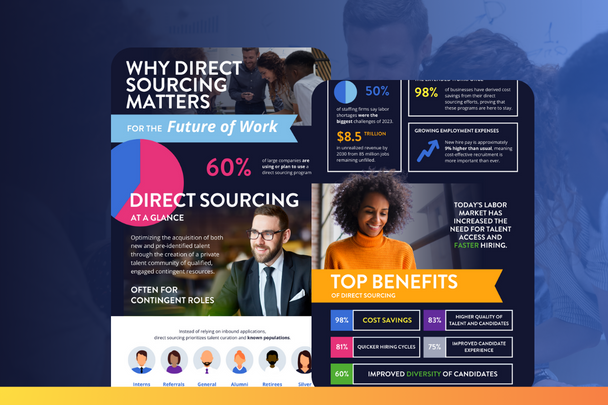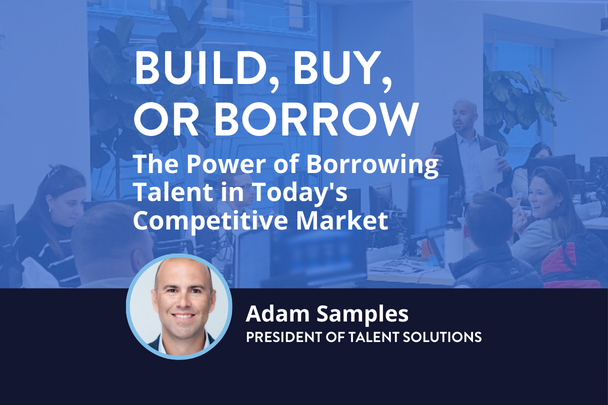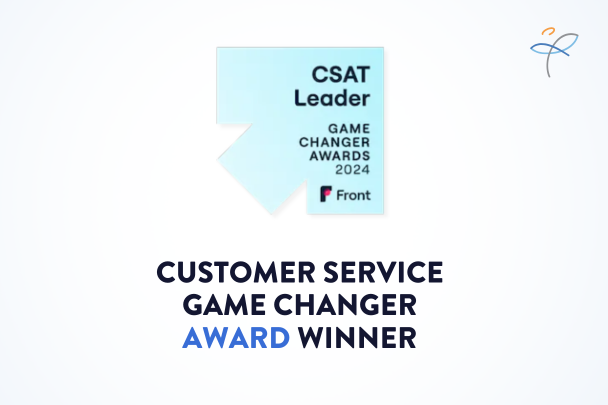How to Scale Your Contingent Workforce for Maximum Impact
There was a time when the contingent workforce meant seasonal staff, IT techs, or an office temp here or there. Now most large organizations boast a high-performance, blended workforce, with up to nearly 50% contingent roles. That is the kind of balance that ensures the ability to meet customer needs and achieve company goals for growth. Contingent workers allow you to scale up and down in alignment with market opportunities. They provide an option to potentially bring in difficult-to-source skills. They increase both flexibility and agility when managed as a strategic lever for the organization.
When does contingent workforce growth become too hard to manage?
Despite all the benefits of a blended workforce, reaching an optimal blend of talent can be more like a nail-biting game of Jenga than a precision blueprint for planned workforce expansion and operating efficiency. That’s because the initial use of contingent talent is often more of an organic exercise than a planned strategy. There is typically too little oversight or visibility. As a first step, you may already be working with an employer of record for payrolling services, but individual hiring managers may continue to operate independently, without set policies or procedures to manage risk. Costs are untracked and probably off-budget. It doesn’t have to be that way.
A strategic approach to the contingent workforce helps manage growth
Taking a strategic approach to the contingent workforce helps you be more mindful and purposeful in planning how to support the growth of your organization. To minimize growing pains and avoid the chaos of unmanaged expansion, companies just starting to scale up in any significant way can learn from the experiences of earlier adopters of managed services provider (MSP) programs. Partnering with an MSP makes it possible to scale the contingent workforce with greater visibility, stronger compliance, and more disciplined governance to accelerate impact, reduce costs, lower risk, and operate more efficiently and effectively.
When is it time to partner with an MSP?
A few key changes to the way a business uses (and manages) contingent labor can trigger the need to partner with an expert in contingent workforce management. For example:
- Expanding the business into new markets with unfamiliar labor laws
- Compliance and audit issues, such as misclassification or security clearances
- Continuing struggles to source contingent talent
- The introduction of technology to automate and streamline some of the most time-consuming and repetitive recruiting tasks
- Growing use of different types of contingent workers, e.g., staffing agency employees, independent contractors, solutions consultants, alumni, retirees, etc.
An experienced MSP can bring expertise to solve all of these challenges, as you take a proactive, forward thinking approach to your future talent.
What can go wrong when you scale contingent workforce management?
There are a few strategies HR leaders should keep in mind as your contingent workforce program takes shape:
- While it’s great to fix immediate pain points, don’t forget to plan and design for the future.
- Be sure to engage your stakeholders sufficiently, i.e., do more than simply present the program; get their input in its development.
- Don’t wait too long to start.
- Create a seamless experience for your stakeholders, especially candidates.
An MSP makes it easier to efficiently scale your contingent workforce
An MSP is an expert in contingent workforce management. It serves as a bridge from talent acquisition to talent deployment, based on a well-established plan, consistent processes, and performance standards with universal applicability. An MSP provides a framework to efficiently bring contractors in and out of the organization. It establishes standard protocols for adding new suppliers to your talent team. It offers enterprise visibility into who is working on your behalf, what they are doing, and what it all costs. All participants follow the same disciplined procedures, making it easy to scale up or down as needed.
A contingent workforce program designed with flexibility at its core can accommodate current needs as well as future requirements. An MSP gives you the agility to scale the contingent workforce as your needs change and mature.
What are the metrics that matter in contingent workforce management?
Most MSP case studies will be quick to point to traditional metrics, such as cost savings, time to fill, turnover, and recruitment funnel metrics. The true value of partnering with an MSP is more far reaching. An MSP brings a strategic lens to your non-employee workforce. It puts structure around your strategy and vision. It ensures you are able to find workers you can’t find on your own, exactly when you need them. It helps you be more competitive in the talent marketplace. Having an MSP partner ensures you have the right talent at the right price at the right time.
How will you know if you are doing it right?
When you leverage talent in a strategic way, eliminating compliance gaps, finding the talent you need and getting rave reviews from hiring managers and candidates, you can continue to confidently scale your workforce for growth and optimal impact.








